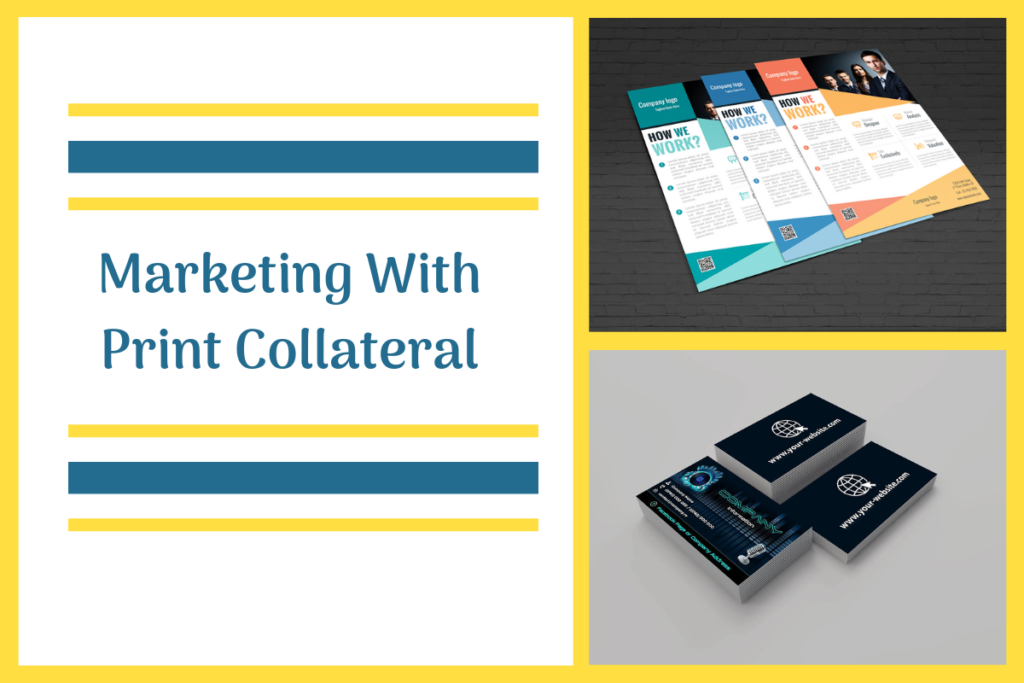
Your first question may be: What the heck is “print collateral”? It’s just a fancy term for any type of printed material you leave with a customer or make available for a customer to pick up or consume. It could be anything from a business card to a poster.
Printed marketing materials have distinct advantages over digital ads or emails. For one thing, the digital space has become so overcrowded that consumers have learned to tune out ads, and many people use ad blockers so they never see them at all.
So, how do you get your customers’ attention and keep them interested long enough to understand what your company has to offer? When it comes time for them to make a purchase, how can you increase the chances that they will remember your company? Or maybe your goal is to increase traffic to your website so customers can view the full array of what your company has to offer or find useful information and get their questions answered.
We’ve got one word for you: Print.
Where to begin
If you’ve put all your marketing eggs in the digital basket, you may not be sure how to integrate print with your online strategy. It’s easier than you think, and adding print to your marketing mix will yield results that make it well worth the effort.
Business Cards
Business cards have stood the test of time, and even in a digital world, they are not likely to be replaced. Think about what happens when you hand someone your business card. They hold it in their hands and immediately take a look at it. Part of its impact lies in the fact that when you hand a person a business card, you are making a personal connection that an email or digital ad can’t match.
The use of business cards dates back to the 17th century, but adding 21st century technology can make them even more useful. When you include a QR code, your prospects can easily add your contact information to their device, or you can direct them to a landing page, website, or video.
Direct Mail Postcard
Direct mail is another “oldie but goodie” that literally dates back centuries. Technology now enables companies to personalize their direct mail campaigns in ways you may not have thought of. With variable data printing, you can include not only the recipient’s name but an image that targets certain demographics (for example, a photo of a young family with children versus a photo of an older couple, depending on the recipient). You can provide a custom map showing them the quickest route to your business or a specific offer based on their purchase history. Including a QR code can make it easy for them to visit your website and help you track the success of your campaign.
Rack Cards
A rack card is great for point of purchase marketing, hotel or bank lobbies, showrooms, waiting rooms, and tradeshows. If part of your target market is tourists, consider placing them at highway rest stops and restaurants. Rack cards are a great way to let prospective customers know you exist. By using colorful images on high-quality, glossy paper, you can grab a customer’s attention and provide basic information about where you’re located and how to get more details about your business.
Brochures
Brochures are similar to rack cards, but are folded, so instead of two panels, you have four or eight, allowing you to include more details about your products and services. In addition to the locations mentioned for using rack cards, brochures are great for including in direct mail campaigns, media kits, or tradeshow swag bags. Because a brochure provides more room for listing details about your business, they are a good way to deliver information on your company’s products and services, introduce new products, or explain how to use existing products. Brochures build trust and credibility, and make a good impression on prospective customers.
Posters
Posters are great for announcing upcoming events or promotions. They’re designed for short-term use and messaging that can be instantly absorbed and remembered. By choosing the right graphics and colors, a poster can make a big impression in a matter of a few seconds.
Which type of print collateral is right for your business?
As with everything in marketing, your primary focus should be on your target audience. Consider what information you need to convey and whether you need to include a lot of detail or use the printed piece to direct your customer to another source for more specifics. Think about where and when you will deliver your print collateral. Finally, it’s critical that your marketing materials be well-designed and professionally printed. Don’t try to stuff too much information into a small space, and don’t undermine your efforts (and your reputation) with poor quality paper and printing.
